
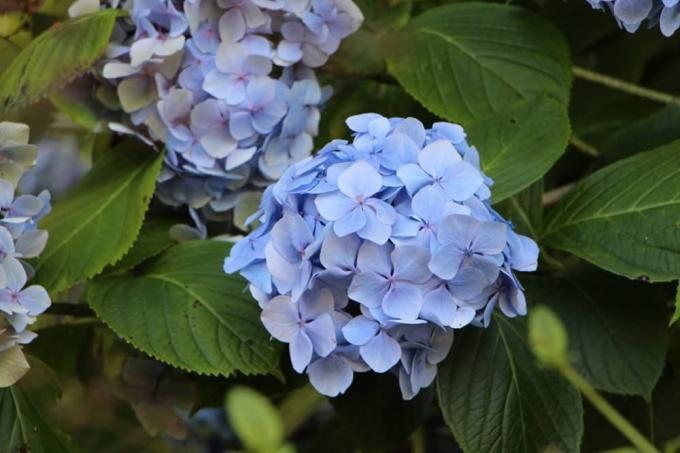
Table of contents
- beginning of flowering
- duration of the flowering period
- inflorescences
The hydrangea bears the botanical name Hydrangea and, depending on the variety, grows either upright or as a climbing plant. As a deciduous flowering shrub, the plant transforms every garden into a romantic sea of flowers during its flowering period. Since the hydrangea also grows under shady site conditions, dark corners of the garden can also be beautifully designed. The beginning and duration of the flowering period also depend on the variety.
beginning of flowering

If hydrangeas feel comfortable in their location, then the first flowers appear very early. Some varieties flower as early as spring, while others only start flowering in summer. In addition, the beginning of the flowering period depends on care and site conditions. The condition of the soil, the weather, the incidence of light and the fertilizer also play an important role in flowering. If these factors are not optimal for the hydrangea, then it can happen that the flowering period is delayed. In addition, the pruning of the hydrangea in the previous year must not be too severe. Since the plant is already preparing its flower buds for the next year after flowering, they must remain on the bush. Therefore, only the completely dried inflorescences and branches should be cut out.
- Beginning of flowering depends on the variety
- Early varieties start as early as May
- Most varieties start flowering in June
- Specimens grown early in the greenhouse flower earlier
- Flowering comes later in high and cool mountain locations
- In warmer regions, the flowering period also begins earlier
- These include the wine-growing regions
- A suitable location with airy and partially shaded conditions is important
- Full sun is not tolerated, negatively affects flowering
- Late night frosts can destroy the flower bases in spring
- Ensure adequate winter protection
Tip:
Alternatively, you can leave the dried flowers on the bush so that the inflorescences provide natural protection against cold winter temperatures. In this way, the next flowering period is guaranteed to take place.
duration of the flowering period
Hydrangeas bloom long and abundantly, so the shrubs transform the garden into a colorful floral paradise. Just like the beginning of the flowering period, the end depends on many aspects. The better the site conditions and care, the longer the flowering period. In order for hydrangeas to thrive and bloom for a long time, it is important to ensure that there is always an adequate water supply. If the hydrangea is already dropping its leaves and flowers at midday on hot summer days, the plants urgently need additional watering units. Otherwise, flowering may come to an end prematurely. In addition, hydrangeas are heavy feeders and have a high nutrient requirement. Therefore, the plant is dependent on frequent and plentiful fertilizers in order to develop its beautiful flowers for a long time.
- All varieties bloom throughout the summer
- Many varieties bloom into autumn
- In general, the flowering period for hydrangeas lasts until September
- Late-flowering varieties even flower until October
- Exotic varieties usually only flower in the summer months
- Optimal care promotes flowering
- Be sure to water and fertilize plentifully
- Use either rainwater or softened drinking water for watering
- Use special hydrangea fertilizer
- Alternatively, fertilizers for rhododendrons are possible
- Only fertilize hydrangeas until the end of July
A notice:
If you want to provide your hydrangeas with an organic fertilizer during the flowering period, pellets made from cattle manure are suitable. These natural fertilizers provide the flowering shrubs with sufficient nutrients for an intensive flowering phase.
inflorescences
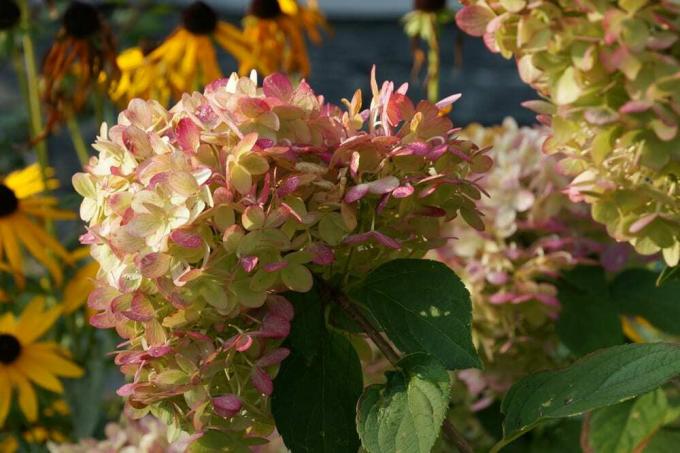
Hydrangeas are available in a wide range of flower colors in specialist shops. It can also happen that the flowers change color. A change in the pH value in the soil, which can occur depending on the year, is often responsible for this. Brightly flowering hydrangea varieties first form green buds and then take on the actual color of the flowers. When they fade, the inflorescences turn green again. Darker flowers, on the other hand, often turn brown-red when they fade. New breeds and hybrids surprise with unusual flower colors, some of which fade to a red hue in autumn. Flowering hydrangeas are already on sale in early spring, these specimens are propelled into greenhouses. Since the hydrangea is sensitive to frost, early planting outdoors does not do well for the plant. For this reason, hydrangeas in full bloom at the beginning of spring are better kept in the conservatory.
- Form large balls of flowers
- Flowers slowly wither
- Common flower colors are pink, pink, red and white
- Blue coloring of the flowers is not natural
- Can be achieved by acidic soil and alum in the irrigation water
- Keep early flowering specimens in the conservatory until the ice saints
- Also do not set it up in the blazing sun
- A slightly shaded spot with good ventilation is ideal
- Do not cultivate hydrangeas in the conservatory all year round
- Need dormancy in the winter months
- Must be kept cool for a while to form new flowers
Tip:
The decorative hydrangea flowers are ideal as cut flowers for the vase. However, you should pick these quite late in the flowering period, because only at this point in time have the petals developed a sufficient degree of firmness.
 Home editorial office
Home editorial office
Learn more about ornamental trees

Shell cypress, Chamaecyparis obtusa: 10 care tips
The clam cypress, which originated in Japan, is one of the most popular evergreen garden plants in this country. The 10 most important tips for caring for conifers have been compiled for you here.
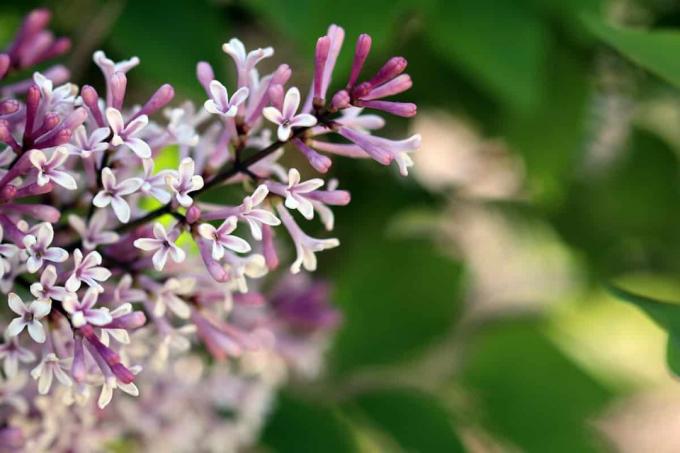
Dwarf lilac: 9 tips for care and pruning
The dwarf lilac impresses with its magnificent and fragrant flowers, which at the same time form an ideal retreat for native insects. The nine most important tips for caring for and especially cutting mini lilacs are summarized here for you.
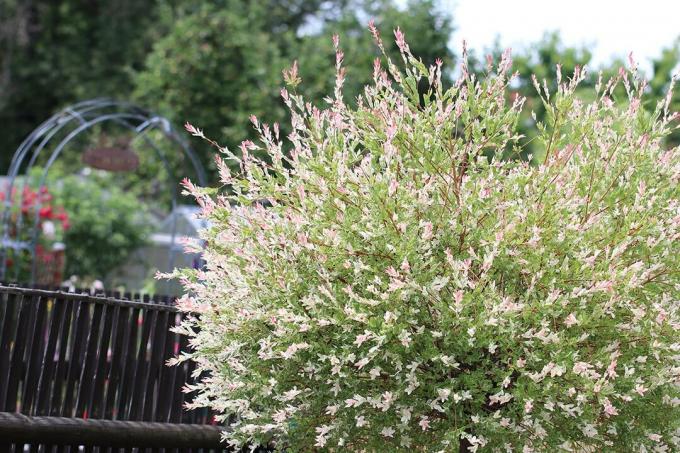
Flamingo Tree: Care and Pruning | flamingo pasture
The flamingo willow (Salix integra 'Hakuro Nishiki'), better known as the harlequin willow, is less noticeable with its inconspicuous flowers than with its colorful leaves. Its crown with the white-pink-green shoots draws everyone's attention, whether as a shrub or as a standard tree.

23 evergreen, hardy & fast growing shrubs
Evergreen and hardy shrubs are ideal for adding color to garden beds, patios and balconies in winter. Fast-growing specimens are particularly in demand. The 23 most popular shrubs can be found in the home garden guide.
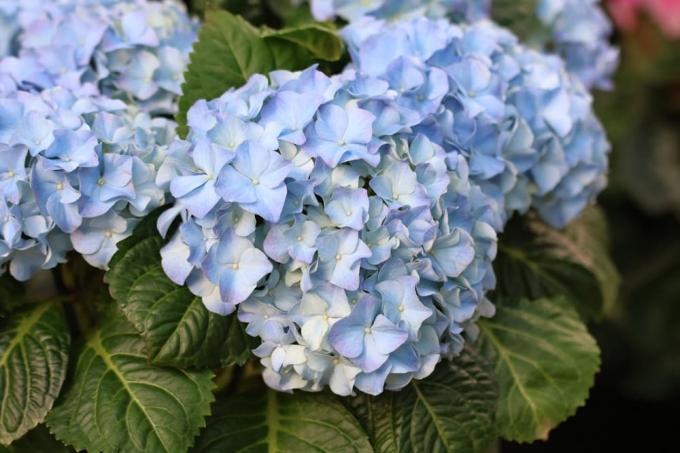
The basics of hydrangea care
Hydrangeas provide a real bloom in the garden or on the balcony, as long as they are cared for professionally. Read here how best to do this.

Rhododendron location: 6 important criteria
Rhododendrons are known for their sea of flowers, which, depending on the variety, unfolds its full splendor between March and June. However, the plants only develop the numerous flowers if the location meets their requirements. Rhododendrons are extremely picky when it comes to location.
